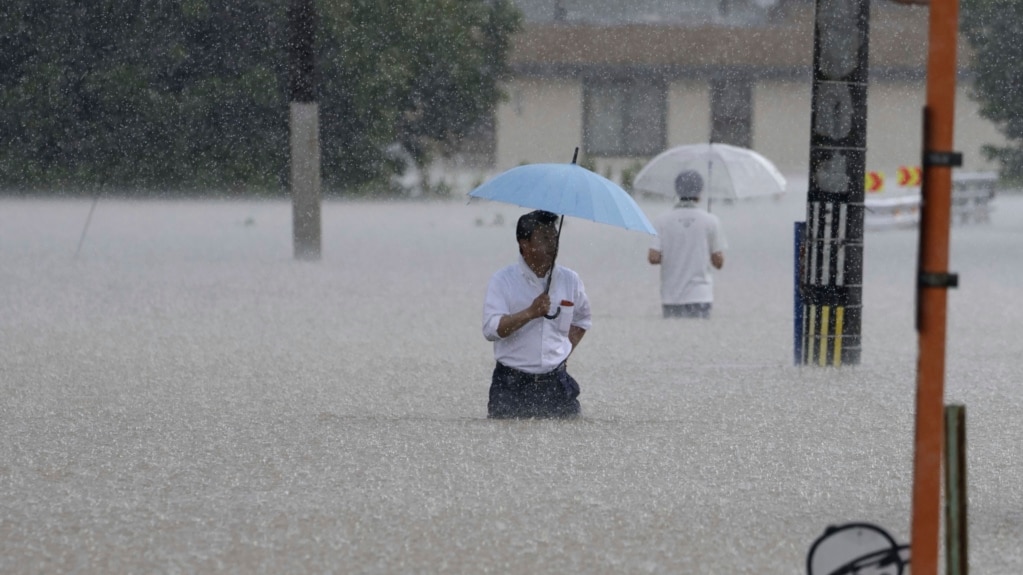India, Japan, China, Turkey, and the United States have reported severe flooding in recent days.
Schools in New Delhi were closed Monday after heavy monsoon rains hit the Indian capital. At least 15 people died in landslides and flash floods over the last three days. To the north, the Beas River overflowed, carrying vehicles downstream as the river flooded neighborhoods.
In Japan, heavy rain fell on the southwestern island of Kyushu, causing floods and mudslides. Two people reportedly died and at least six others were missing. Local TV showed damaged houses in the city of Fukuoka and muddy water in the Yamakuni River.
On Turkey’s mountainous Black Sea coast, heavy rains caused rivers to overflow. Landslides and flooding damaged cities in the area. In southwestern China, at least 15 people were killed by flooding in mountainous areas.
And in the United States, areas of New York state’s Hudson Valley and Vermont also reported heavy flooding.
The Associated Press (AP) reports that scientists are saying storms are forming in a warmer atmosphere. They say this is making extreme rainfall more common. The scientists predict that additional warming will cause more bad weather.
The scientists say warmer air holds more water, or moisture. More moisture might result in storms creating more precipitation depending on several other conditions. Scientists blame carbon dioxide and methane, two forms of carbon gases, for trapping heat in the atmosphere.
What scientists call climate change is not the cause of the storms creating rain. Instead, they say storms are forming in an atmosphere that is becoming warmer and wetter.
Rodney Wynn is a meteorologist at the National Weather Service in Tampa Bay, Florida. He said, “68 degrees Fahrenheit can hold twice as much water as 50 degrees Fahrenheit.” Wynn said warm air expands, making it able to hold more moisture.
U.S. space agency NASA says on the Global Climate Change part of its website that, for every one degree Celsius that the atmosphere warms, it can hold about seven percent more moisture. NASA also says the average global temperature has increased by at least 1.1 degrees Celsius since 1880.
Brian Soden is a professor of atmospheric sciences at the University of Miami. He said, “…As these storms form in warmer environments that have more moisture in them, the rainfall increases.”
“As the climate gets warmer, we expect intense rain events to become more common,” Soden said. “It’s not surprising to see these events happening, it’s what models have been predicting ever since day one.”
Gavin Schmidt is a climate scientist and director of the NASA Goddard Institute for Space Studies in New York City. He said the areas that are facing the effects of climate change are different from the ones where warming gases are being released. He said the places where flooding takes place are not prepared for bad weather.
Most of the effects "are happening in places that don’t have good infrastructure, that are less prepared for weather extremes and have no real ways to manage this,” Schmidt said.
I’m Dan Novak.

